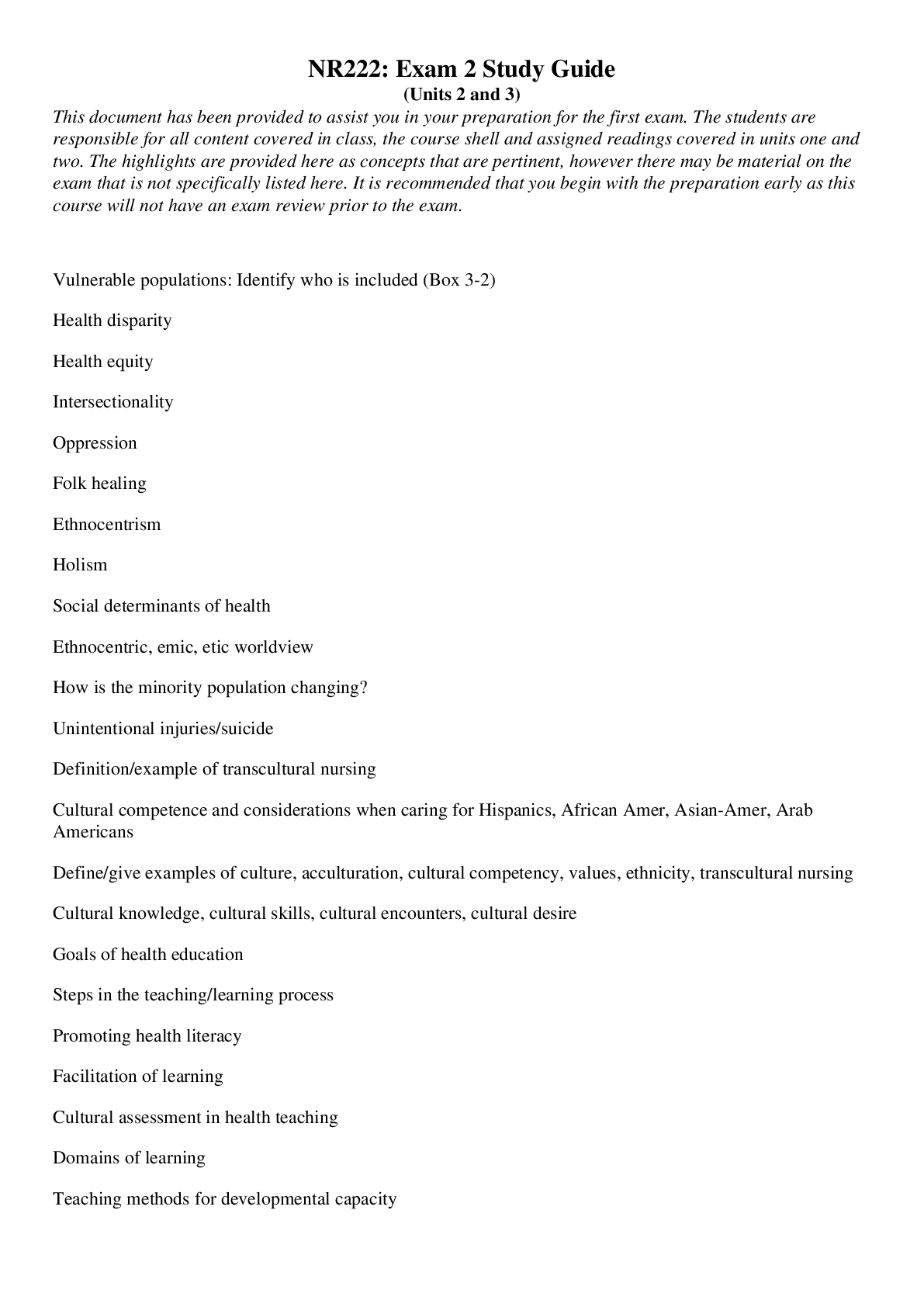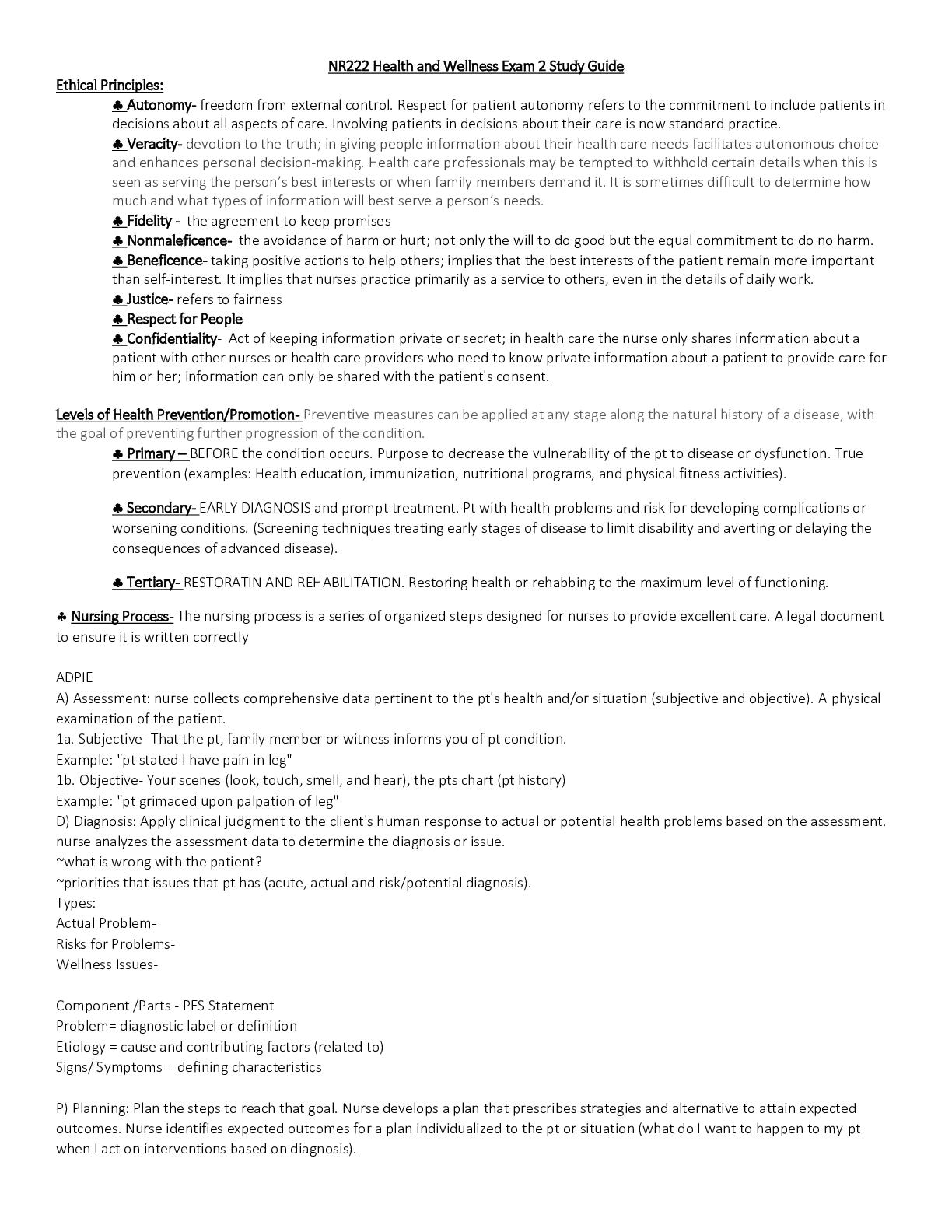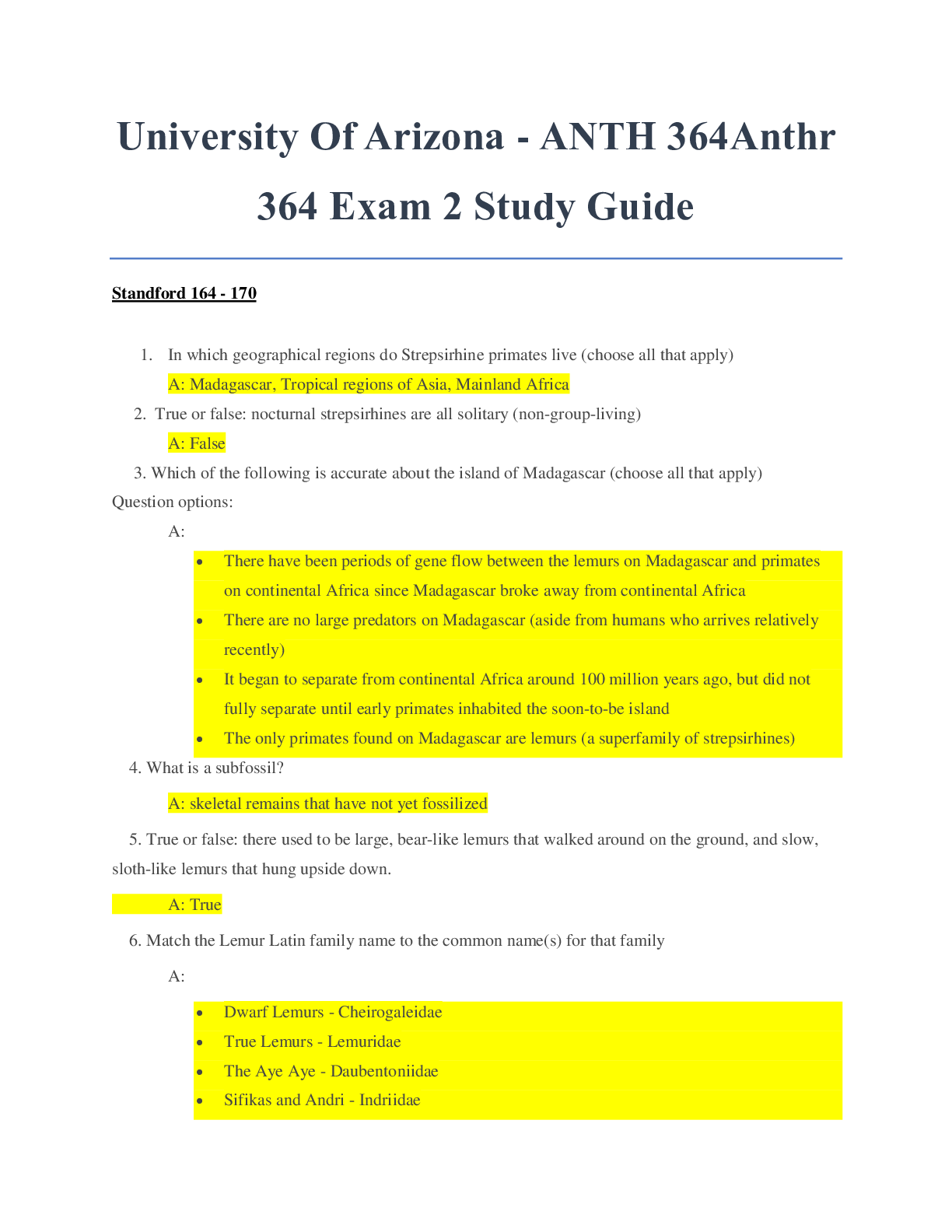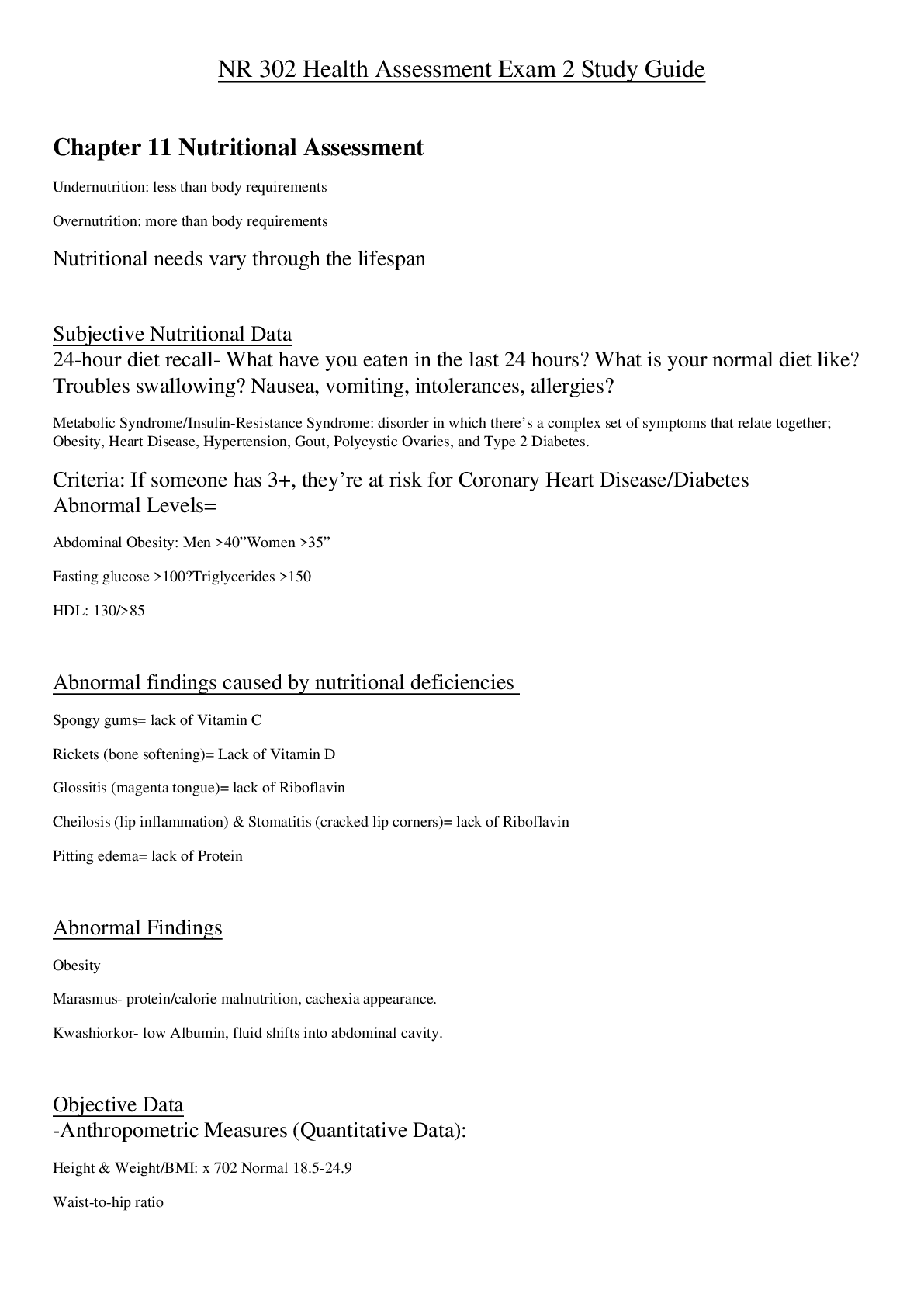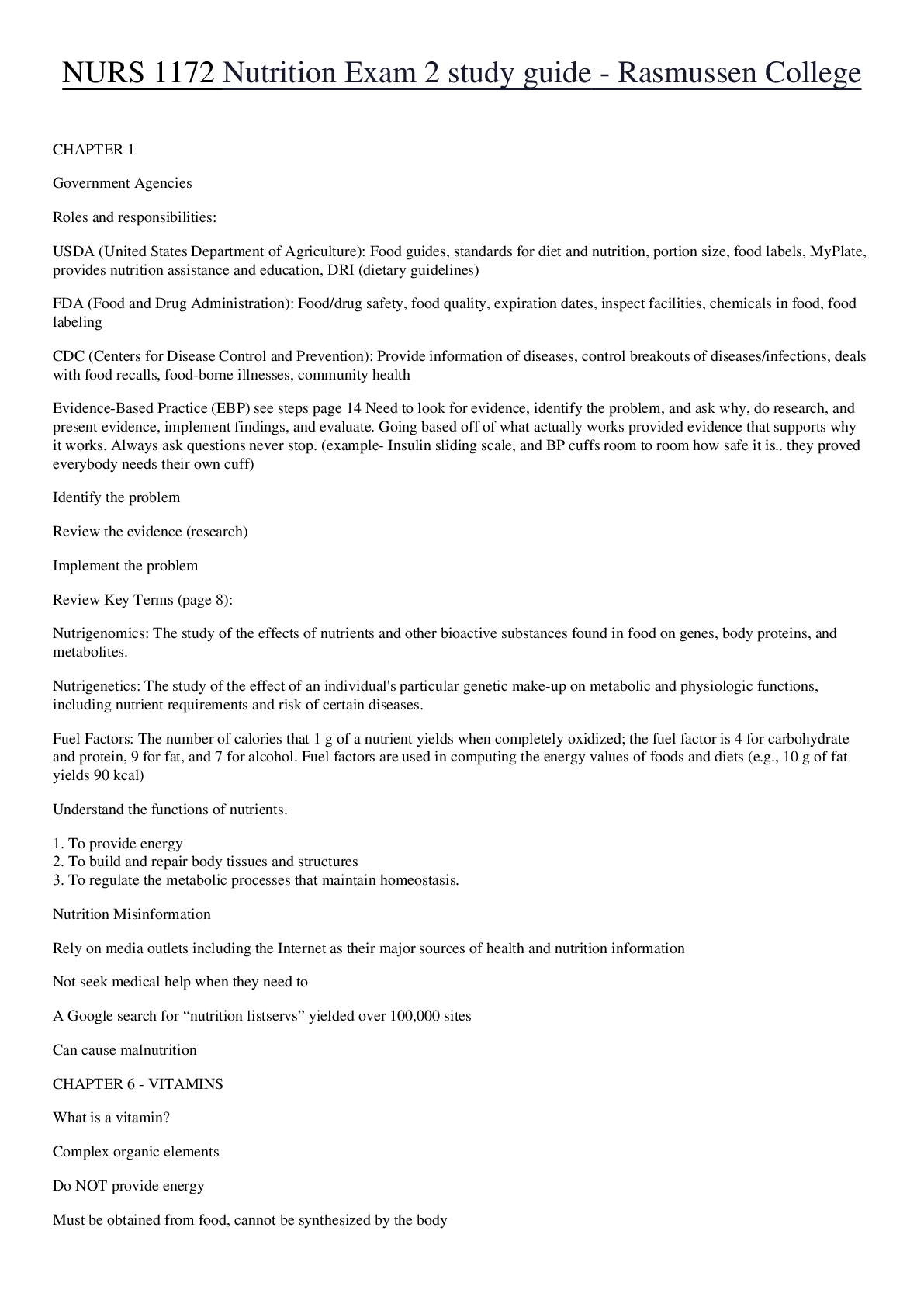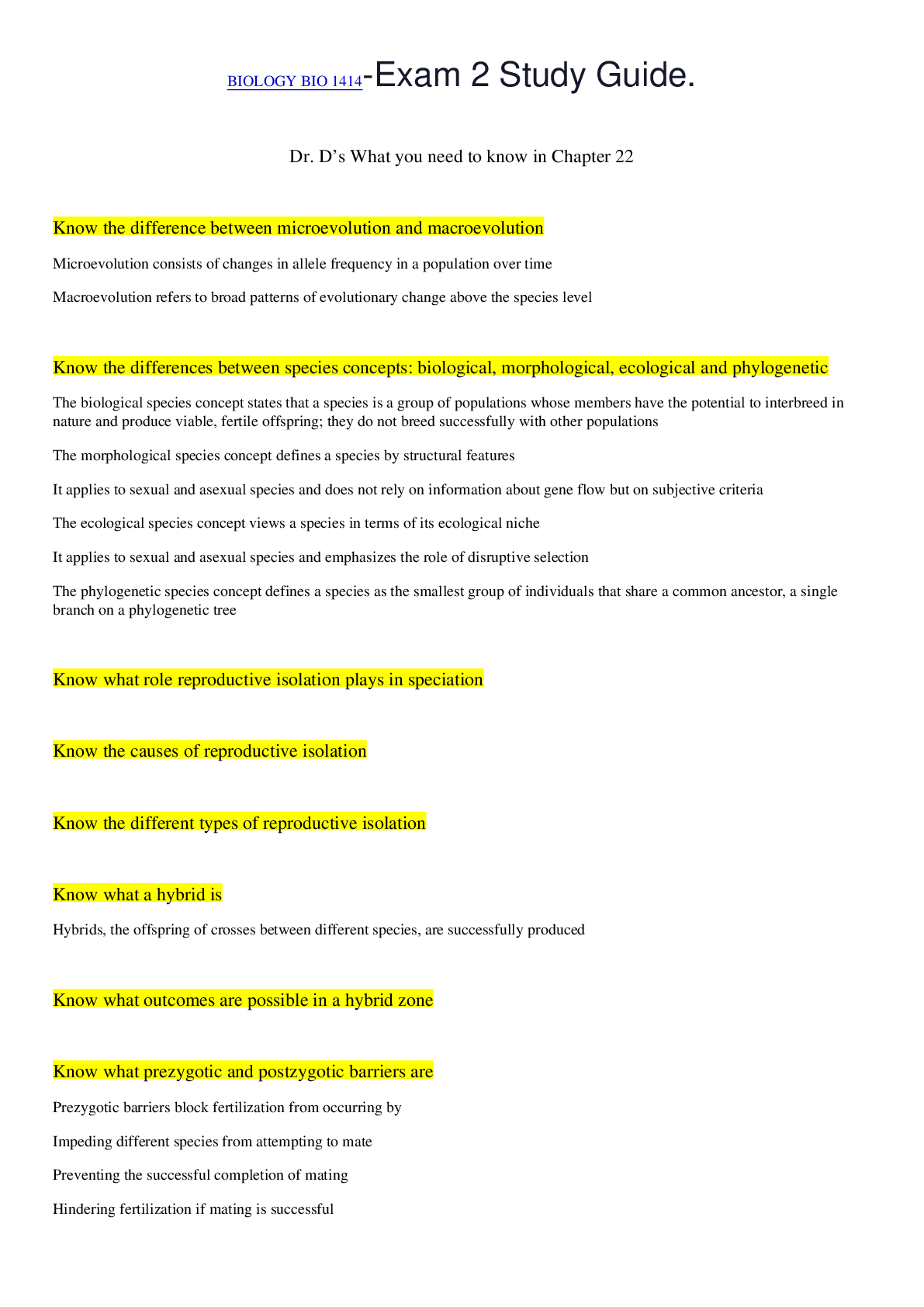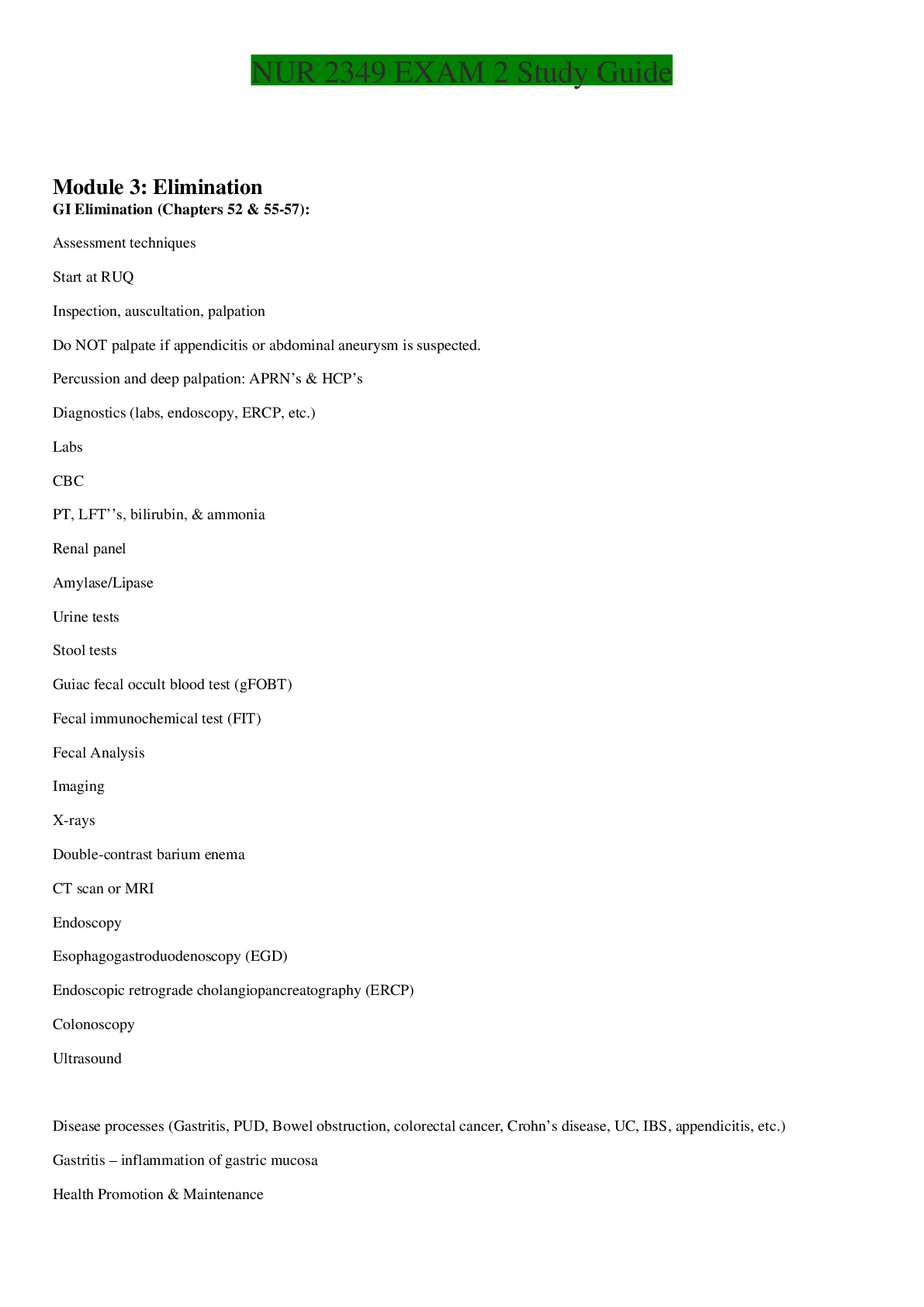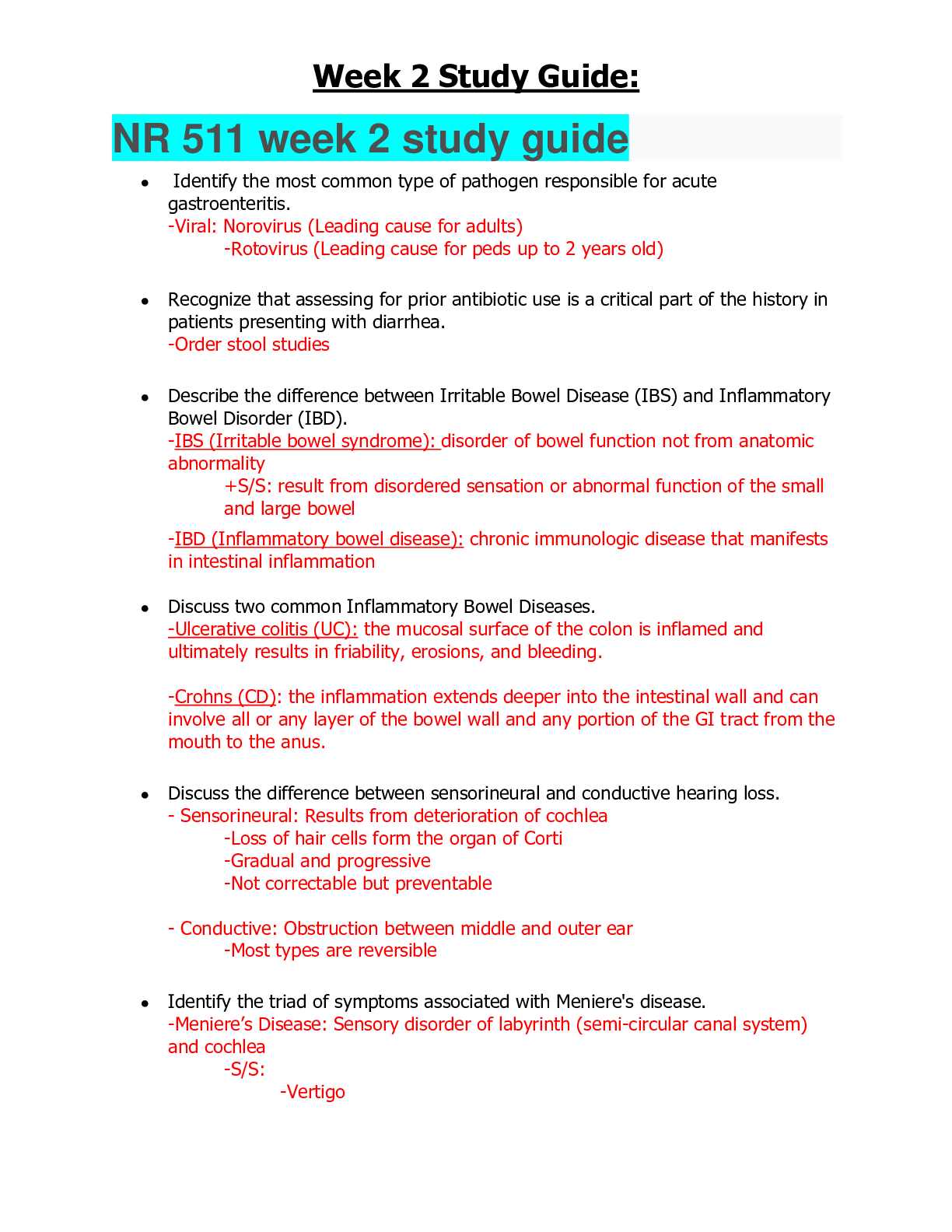*NURSING > STUDY GUIDE > Nursing 3320 – Holistic Health Assessment FALL 2021 – Exam 2 Study Guide (All)
Nursing 3320 – Holistic Health Assessment FALL 2021 – Exam 2 Study Guide
Document Content and Description Below
Nursing 3320 – Holistic Health Assessment FALL 2021 – Exam 2 Study Guide For every chapter: The Structure and Function is a review of patho. I emphasize CERTAIN AREAS FOR IMPORTANCE IN... HOW YOU APPLY IT TO ASSESSMENT. The areas I emphasize are on the Powerpoint Class Notes and areas mentioned below. Know the Subjective data, including abnormal findings. Objective data – Exam across the lifespan; age specific findings and exam techniques, normals and abnormals. ALWAYS pay attention to my slides. Unless I indicate that something below is excluded from the material, info on my slides could be covered on the exam. Know HOW to perform the physical assessment. Always know the abnormal findings in the right shaded column) – for each chapter. This outline will give specific details, as well as those abnormals at the end of each chapter – narrowed down a bit. The Top 10 DRGs associated with this section are covered in the Lecture Slides (Post-op Pain, Asthma, Pneumonia, Acute MI, CHF, DKA and DVT. Ch. 10 Pain Assessment: The Fifth Vital Sign Structure and Function • Two types of pain Processes: Nociceptive and Neuropathic Processing o Don’t worry about all the types of fibers. Just know Nociceptors – specialized nerve endings that detect painful sensation Nociceptors - Stimulated by injury, trauma or by chemical mediators released from the site of tissue damage • Focus on the process of Nociception – mainly as outlined on my slide – the 4 steps and what happens in each one (See p. 161 including Fig. 10-2) o Transduction A noxious stimulus causes tissue injury; release of neurotransmitters; action potential to spinal cord o Transmission Pain impulse - sp cord -> brainstem and thalamus -> cortex (if left uninterrupted) o Perception Conscious awareness of painful sensation o Modulation Body produces neurotransmitters to impede pain impulse • Neuropathic pain – description of what it is, examples o Difficult to assess and treat Pain is perceived long after healing o Abnormal processing of the pain message from an injury to nerve fiber o Nociceptive pain can change into a neuropathic pain over time with poor control Diabetes, Shingles (herpes zoster), HIV/AIDS, sciatica, trigeminal neuralgia, phantom limb pain and chemotherapy • Sources of pain (Know examples of each) o Visceral (originating from larger interior organs) Pain difficult to localize “cramping all over” o Deep somatic (from blood vessels, joints, tendons, muscles, and bone) o Cutaneous (skin surface and SQ tissues) o Referred (See also Ch. 21, Table 21-2, p. 559 re: areas of referred pain). Note difference between Visceral Pain and Referred Pain • Types of pain o Acute Duration • Short termed; predictable path Characteristics • < 6 months, dissipates after healing Incident Pain • Self-protects; warns pt of actual or potential tissue damage Examples • surgery, trauma, kidney stones o Chronic (Persistent Pain) Malignant v. Non-Malignant • Duration • When pain continues longer than 6 months, remains after healing Characteristics • Originates from abnormal processing of pain fibers • Outlasts its protective purpose Examples • Arthritis, low back pain, fibromyalgia o Breakthrough pain Pain starts again and escalates before the next analgesic dose • Developmental Competence: o Infants: Have the same capacity for pain as adults; inhibitory neurotransmitters are in insufficient supply until birth at full term; preverbal infants at high risk for under-treatment of pain. • Aging adults: No evidence that older adults perceive pain to a lesser degree; PAIN IS COMMON, BUT NOT A NORMAL PROCESS OF AGING. People with Dementia DO FEEL PAIN. • Gender Differences: Influenced by societal expectations; men have been raised to be more stoic than women. Subjective data: How to assess pain – questions and Rationales (right column of Jarvis). · Look at questions such as “How do you react when in pain” to help with people who have difficulty reporting or describing pain, “How do you usually react when in pain” and ”What does pain mean to you? Subjective data • Self report is best • PQRSTU • Description of pain o Neuropathic - burning, shooting, tingling o Visceral - aching of localized, cramping of not o Somatic - throbbing or aching • Pain Assessment Tools o Numeric Pain rating scales o Tools that are unidimensional v. multidimensional and when each used o Be familiar with specific tools for certain types of pain o Uni-dimensional tools Rating Scales, Looks at Intensity 0-10 scales, Visual Analog Scales Simple Descriptor Tool used for Older Adults (mild, moderate, severe v. numbers) o Multi-dimensional tools (for use with Chronic pain or acute pain that is difficult to treat) Looks at other indicators aside from intensity, i.e. quality of life, functional status, impact on daily life Initial Pain Assessment - Assesses quality of life Brief Pain Inventory - areas of mood, walking, ability and sleep o Age-specific tools Infants: CRIES Scale for Post-op Pain Children <2 years old Children: Faces Pain Scale Revised (FPS-R) Oucher scales for gender or culture specific (The child rates the pain, not the nurse) Ages 4-5 Aging adult – Simple Descriptor Tool (words v. numbers) Adults with Dementia – PAINAD Evaluates breathing, body language, vocalization, and consolability • Objective Data o Exam – joints, muscles [Show More]
Last updated: 2 years ago
Preview 1 out of 30 pages
.png)
Buy this document to get the full access instantly
Instant Download Access after purchase
Buy NowInstant download
We Accept:

Also available in bundle (1)
.png)
NURS 3320 Holistic Health Assessment FALL 2021 Exam 1 -Exam 3. COMPLETE STUDY GUIDES. A+ RATED
NURS 3320 Holistic Health Assessment FALL 2021 Exam 1 -Exam 3. COMPLETE STUDY GUIDES. A+ RATED
By Quality Suppliers 4 years ago
$30.5
3
Reviews( 0 )
$20.00
Can't find what you want? Try our AI powered Search
Document information
Connected school, study & course
About the document
Uploaded On
Feb 12, 2021
Number of pages
30
Written in
Additional information
This document has been written for:
Uploaded
Feb 12, 2021
Downloads
0
Views
90













